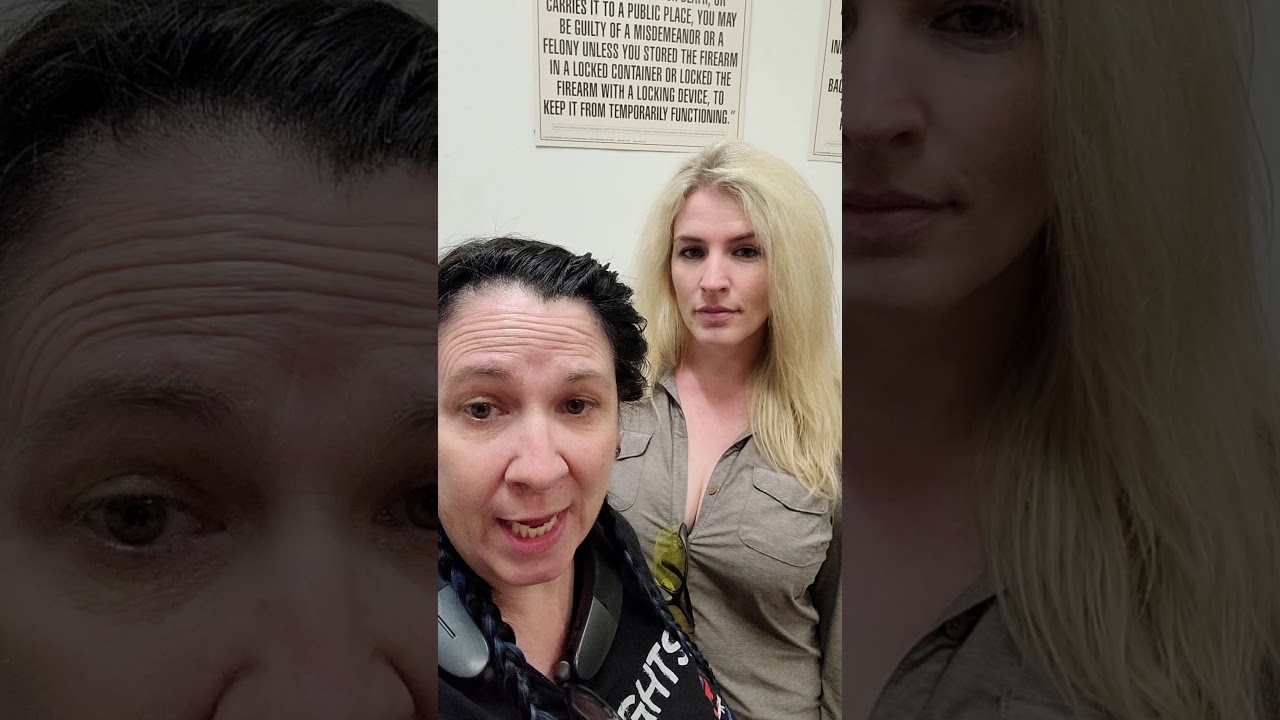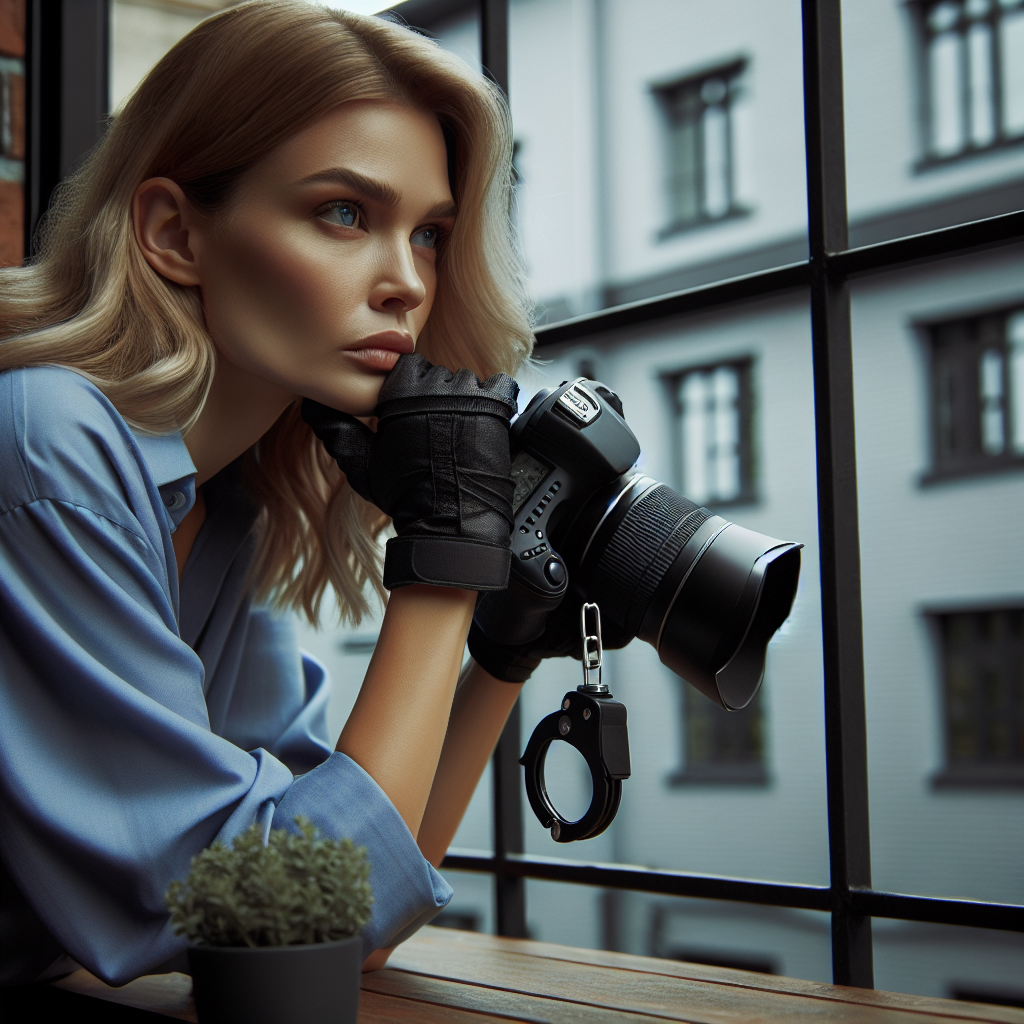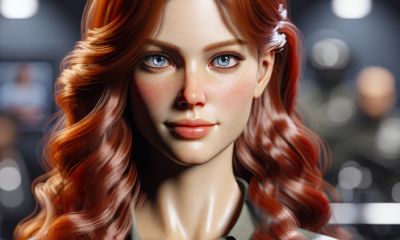Womens Firearms
Armed and Empowered: Why Every Woman Should Consider Situational Shooting Training

Hello there! I’m Jade Tripp, and I’m excited to dive into a topic that is not only close to my heart but also incredibly important for women everywhere—situational shooting training. In a world where personal safety can sometimes feel uncertain, gaining the skills and confidence to defend yourself is incredibly empowering. Let’s explore why every woman should consider this type of training, and how it can enhance both your safety and self-confidence.
Understanding Situational Shooting Training
Situational shooting training goes beyond basic firearm handling; it’s about understanding how to respond to real-world scenarios. It includes training in various situations, such as low-light environments, moving targets, and reacting under stress. This level of training is not just about marksmanship—it’s about being aware of your surroundings and knowing how to protect yourself and your loved ones.
Real-Life Empowerment through Training
-
Empowerment of Knowledge: Training gives you the knowledge to navigate potentially dangerous situations. For example, consider the story of Maggie Doyne, a well-known advocate for women’s rights and self-defense. After undergoing situational shooting training, she felt empowered to address potential threats with confidence, allowing her to focus on her mission to help young girls in Nepal.
- Building Confidence: Learning how to handle a firearm can significantly boost your self-esteem. Take Amy H., a recent graduate from a weekend training course. She shared that prior to her training, she felt unsure attending military-themed social events. Afterward, she stated, “I walked into that room with my head held high. I felt in control of my own personal safety.”
The Importance of Situational Awareness
Part of situational shooting training is developing situational awareness. This involves being mindful of your environment and noticing anything unusual. A great example is Carla G., a young woman who learned to trust her intuition. On her way home one night, she sensed something was off about a man following her. Understanding her training, she quickly changed her route, preventing a potential confrontation.
Community and Support
One of the most enriching aspects of participating in situational shooting training is the sense of community. Classes often bring together women from all walks of life, fostering friendships that extend beyond the range. You can share experiences, challenges, and victories. It’s about building each other up—like my friend Nora, who leads a monthly women’s shooting group. Together, they share tips, hold practice sessions, and celebrate each other’s progress.
Choosing the Right Training Program
When considering situational shooting training, seek out certified instructors who prioritize women’s safety and empowerment. Look for programs that not only teach firearm skills but also emphasize mental preparedness and situational awareness. For instance, The Well Armed Woman is a fantastic resource, offering workshops specifically designed for women, featuring both novice and advanced courses.
Conclusion: Take the Leap!
Ladies, the journey into situational shooting training is full of empowerment, knowledge, and connection. It’s not just about the skills you acquire—it’s about transforming your mindset and building confidence. Whether you envision yourself taking a stand in a moment of crisis or merely enhancing your knowledge of personal safety, the benefits of this training are immense.
So, let’s embrace the idea of being armed and empowered together! Join a local class, find a supportive community, and invest in yourself. You deserve to feel confident and secure in your ability to protect yourself and navigate the world with resilience and grace.
Stay safe, stay strong, and remember: True empowerment comes from knowledge and preparation. Let’s get started!
Womens Firearms
"The Ultimate Guide to Choosing Holsters for Women"

Hello, ladies! I’m Jade Tripp, and today I’m excited to guide you through an essential topic in self-defense: choosing the right holster. As women, we face unique challenges when it comes to carrying firearms, and the right holster can make all the difference in comfort, accessibility, and safety. Let’s dive into the various options and features to consider while making this important decision.
Understanding Your Needs
Before you even look at specific holster types, it’s crucial to assess your own needs:
-
Your Body Shape and Size: Every woman’s body is different, and what might work for one of us will not necessarily be comfortable for another. Consider your body type, clothing style, and how you plan to carry your firearm.
-
The Firearm You’re Carrying: Different firearms will fit better in certain holsters. Whether you’re carrying a compact pistol or a revolver, make sure to choose a holster that accommodates your weapon securely.
- Everyday Activities: Are you an active woman who spends a lot of time on the go, or do you primarily need a holster for home defense? Think about how and when you’ll be carrying your firearm.
Types of Holsters for Women
-
IWB (Inside Waistband) Holsters: These are popular for their concealability. Brands like Galco and CrossBreed offer designs that accommodate a woman’s curves. Look for adjustable options that allow for a comfortable fit. An example is the CrossBreed SuperTuck, known for its comfort and adaptability.
-
OWB (Outside Waistband) Holsters: These provide easier access and are often more comfortable for longer waits when you’re out and about. The Safariland 7TS Series is a lightweight option that fits snugly against the body while allowing for easy drawing.
-
Purse Holsters: If you prefer to carry in a handbag, consider specialized purse holsters that retain the firearm’s safety. Brands like Gun Tote’n Mamas have stylish options that combine security with fashion—perfect for everyday use.
-
Ankle Holsters: Ideal for those who need discreet options while wearing dresses or skirts. Consider the Galco Ankle Glove, which provides comfort and stability, perfect for a woman on the go.
- Bra Holsters: For maximum concealment, some women opt for holsters designed to clip onto the bra. Companies like Flashbang Holsters have made a name in this area, offering a discreet yet accessible option women can rely on.
Key Features to Look For
When selecting a holster, keep these features in mind:
-
Material: Aim for durable materials like Kydex or leather. Leather molds to your body over time, while Kydex offers a more rigid and secure fit.
-
Retention: A holster must securely hold the firearm. Check for thumb breaks or adjustable tension screws that allow you to customize the retention level.
-
Accessibility: Your holster should allow for a quick draw while still being safe from accidental discharges. Opt for designs with accessible retention mechanisms.
- Comfort: Look for padded or molded edges to prevent rubbing against your skin, especially for IWB holsters.
Real-Life Stories
Let’s discuss real-life examples. Carrie Lightfoot, founder of the Well Armed Woman, emphasizes how vital it is for women to find comfortable ways to carry firearms. She shares stories of women across the country who have found empowerment in knowing they can defend themselves—often with the right holster!
Another inspiring figure is Natalie Foster, who promotes women in firearms. Her dedication to education guides women in making informed choices about their self-defense needs, including holsters.
In Conclusion: Empower Yourself
Choosing the right holster is more than a practical decision; it’s a step toward self-empowerment and confidence. Whether you’re heading to a self-defense class or just going about your day, the right holster will not only keep your firearm secure but also make you feel more at ease.
Remember, ladies, self-defense is your right. Finding the holster that suits your style, body, and needs is crucial. Don’t be afraid to try out different options before making your final decision.
So, step forward with confidence, and know that you’re capable and empowered. Stay safe and strong! If you have any questions or need further advice, don’t hesitate to reach out. Together, we can foster a community of strong, educated women ready to defend ourselves and support one another.
Womens Firearms
Women Of Freedom @ Firearms Freedom Celebration Event

Today we got some range time in at our local range and hung out with a few of our friends who love our 2A rights. Was an …
source
Womens Firearms
The Psychology of Home Invasions: Understanding the Mind of an Intruder

Hello, ladies! I’m Jade Tripp, and today I want to dive into a topic that not only enforces the importance of self-defense but also arms us with knowledge—knowledge that can empower us to protect ourselves and our homes. Understanding the psychology behind home invasions is crucial for identifying potential threats and responding effectively.
The Intruder’s Mindset
To comprehend the psychological profile of an intruder, we first need to acknowledge that most home invasions are crimes of opportunity. The intruder often looks for easy targets—homes that present minimal risk and maximum reward. This could include:
- Visible signs of vulnerability: Unlocked doors, windows left open, or even cluttered pathways that suggest no one is home can all serve as invitations for an intruder.
- Routine observation: Many intruders will scout neighborhoods to note residents’ schedules and habits. If they see you consistently leaving for work at the same time, they might choose that moment to strike.
Real-Life Example: A Neighbor’s Story
Take the story of Sarah, a single mom living in a quiet suburb. She often left her back door unlocked during the day while playing with her children in the front yard. An intruder, having observed her routine, took advantage of this vulnerability one afternoon. Thankfully, Sarah was alerted by her barking dog and was able to scare the intruder off. This experience has allowed Sarah to become an advocate for home safety in her community, encouraging other women to never underestimate the significance of securing their homes.
Understanding Their Motives
Most home invaders are not only after valuables but also possess a psychological profile that can vary widely. Some common motives include:
-
Financial Gain: This is the primary motivation behind most break-ins. Intruders will look for cash, jewelry, electronics, or even prescription drugs.
-
Dare or Thrill-Seekers: Some invaders may be motivated by the adrenaline rush rather than monetary gain. The "game" aspect of breaking into homes can sometimes be appealing to certain individuals.
- Targeted Individuals: Occasionally, intruders may have a personal vendetta. This could be against a former partner or someone they feel has wronged them, making it essential to recognize warning signs in personal relationships.
A Notable Case: The Impact of Personal History
Consider the infamous case of the “North Carolina Burglar,” who was eventually caught due to his personal history of family disputes and targeted attacks. His story reminds us that intruders may have deeper psychological issues stemming from their past, which can lead them to commit such acts. It emphasizes the importance of knowing your surroundings and being aware of any potential threats.
Prevention Tactics
Understanding an intruder’s mindset can help us take crucial preventive measures. Here are a few strategies that can make your home less appealing to potential intruders:
-
Secure All Entry Points: Install deadbolts and security systems. Simple things like window locks and door security bars can deter unwanted visitors.
-
Create Illusion of Occupancy: Utilize timers on lights, or have neighbors keep an eye on your home when you’re out, making it look like someone is home.
-
Build a Community: Get to know your neighbors. A close-knit community can serve as an excellent deterrent as people look out for one another.
- Self-Defense Training: Knowing how to defend yourself gives you confidence and prepares you for the worst-case scenario. Organizations like the Rape Aggression Defense (RAD) program offer valuable courses specifically designed for women.
Sharing Strength
Remember, ladies, it’s essential to discuss these topics not just in private settings but also openly in community forums and workshops. Sharing stories and insights helps create awareness and fosters a strong sense of community support. Just like Sarah did—her experience turned into a powerful lesson for many, encouraging self-defense workshops and neighborhood watch groups.
Conclusion
Understanding the psychology of home invasions can equip us with the tools and knowledge needed to safeguard ourselves and our loved ones. It’s crucial to take proactive steps to fortify our homes, but even more important is the mindset we cultivate as women. Remember, you are not alone in this, and together, we can create a safe environment for ourselves and our communities.
Stay empowered, stay informed, and let’s keep the conversation going. Until next time, take care of yourselves and each other!
Warmly,
Jade Tripp
-

 Womens Self Defense11 months ago
Womens Self Defense11 months agoNew Legislation Empowers Women to Defend Themselves
-

 Self Defense News1 year ago
Self Defense News1 year agoShe was convicted of killing her abusive boyfriend. Now a Maple Grove woman is home awaiting a new trial.
-

 Self Defense News1 year ago
Self Defense News1 year agoSelf-Defense for All: The new Gracie Jiu-Jitsu Pasadena is for everyone | Online Features
-

 Womens Self Defense1 year ago
Womens Self Defense1 year agoTop 5 Self-Defense Techniques Every Woman Should Know
-

 Womens Self Defense7 months ago
Womens Self Defense7 months agoUnderstanding State-by-State Variation in Self Defense Laws
-

 Womens Fitness1 year ago
Womens Fitness1 year agoXtreme Bodyweight HIIT (Lots of Jumping!) | Joanna Soh (Fio Series)
-

 Womens Preparedness1 year ago
Womens Preparedness1 year ago10 essential skills for surviving in the great outdoors
-

 Womens Preparedness1 year ago
Womens Preparedness1 year agoEmpower Yourself: A Guide to Female Survival Planning









